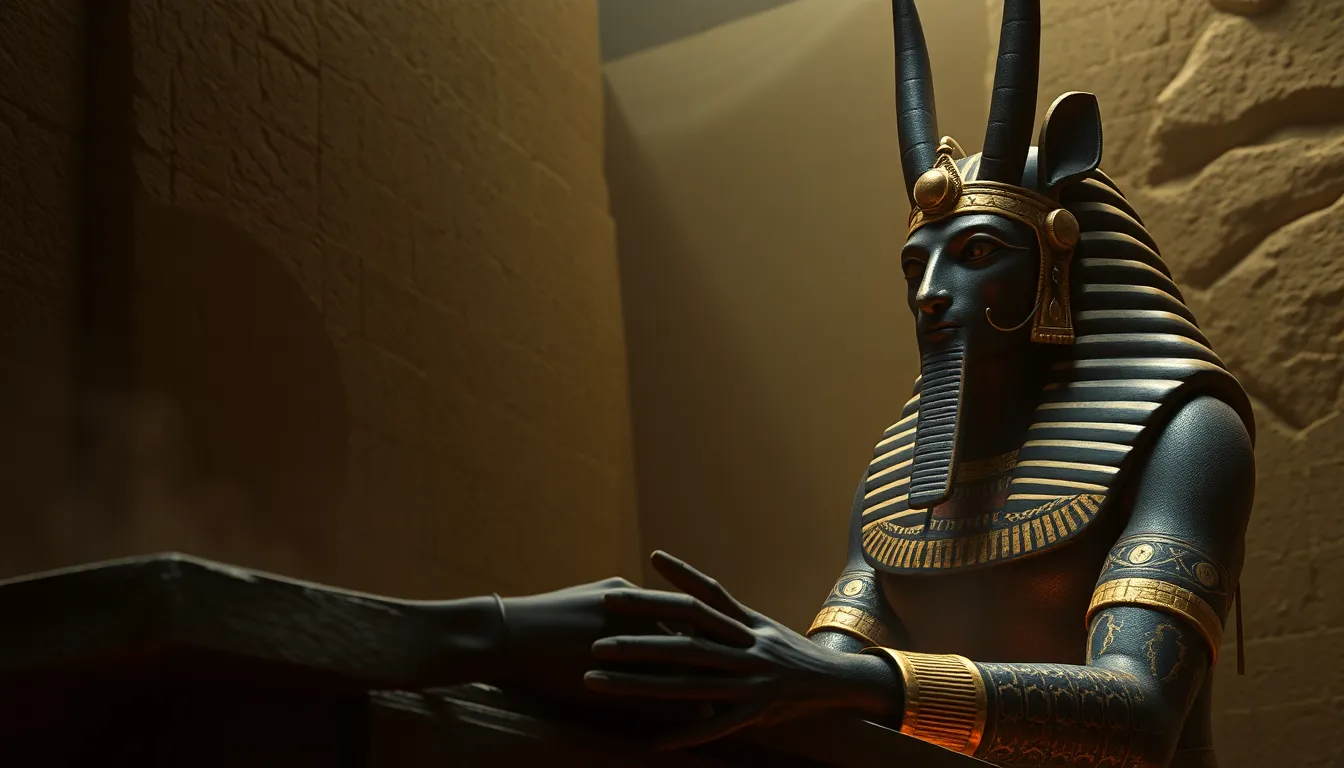Anubis: Guardian of the Underworld and Embalming
I. Introduction
Anubis, one of the most recognizable figures in ancient Egyptian mythology, is often depicted as a jackal or a man with a jackal’s head. His significance transcends mere representation—he embodies the ancient Egyptians’ beliefs surrounding death, the afterlife, and the rituals that accompanied them. As the guardian of the underworld and the god of embalming, Anubis played a crucial role in ensuring the safe passage of souls into the afterlife. This article aims to explore the multifaceted role of Anubis, his historical context, symbolism, and enduring legacy in both ancient and modern cultures.
II. Historical Context of Anubis
Anubis’s origins can be traced back to the early dynastic period of ancient Egypt, with evidence of his worship appearing as early as 3000 BCE. His role evolved throughout the various dynasties, adapting to the changing religious landscape of Egypt.
- Origins: Initially, Anubis was associated with the funeral rites and mummification processes, reflecting the importance of preserving the body for the afterlife.
- Evolution: Over time, Anubis’s significance grew, and he became an essential figure in the funerary texts, such as the Pyramid Texts, solidifying his role in the afterlife.
- Comparison: Unlike other deities such as Osiris, who became the god of the afterlife, Anubis maintained a unique position focused on the protection of the dead and the embalming process.
III. Iconography and Symbolism
Anubis is often recognized by his distinctive appearance. He is typically portrayed as a black jackal or a man with the head of a jackal, symbolizing his connection to death and the afterlife.
- Physical Appearance: His black color represents the fertile soil of the Nile, suggesting regeneration and rebirth.
- Symbols: Common symbols associated with Anubis include:
- The jackal, representing his role as a protector of graves.
- The ankh, symbolizing eternal life.
- The sistrum, a musical instrument associated with the divine.
- Artistic Depictions: Anubis is frequently depicted in tomb paintings, sculptures, and amulets, emphasizing his protective nature and significance in funerary practices.
IV. Role as Guardian of the Underworld
The Duat, or Egyptian underworld, is a complex realm where souls journey after death. Anubis’s primary responsibility in this realm is to guide and protect the deceased.
- Overview of the Duat: The Duat is often described as a dark and mysterious place filled with challenges and tests for the soul.
- Anubis’s Responsibilities: Anubis oversees the embalming process and ensures that the deceased are properly prepared for their journey to the afterlife.
- Weighing of the Heart Ceremony: One of Anubis’s most critical roles is during the weighing of the heart ceremony, where the heart of the deceased is weighed against the feather of Ma’at to determine their fate.
V. Anubis and the Process of Embalming
Mummification was a fundamental practice in ancient Egyptian culture, reflecting their beliefs in the afterlife. Anubis was revered as the god of embalming and played a pivotal role in this sacred process.
- Importance of Mummification: The ancient Egyptians believed that preserving the body through mummification was essential for the soul’s survival in the afterlife.
- Anubis’s Role: He was believed to guide embalmers in their work, ensuring that the body was treated with the utmost respect and care.
- Rituals and Practices: The embalming process involved various rituals, including the removal of internal organs and the use of natron, a natural preservative, which Anubis oversaw to ensure the deceased were adequately prepared.
VI. Anubis in Ancient Texts and Literature
Anubis’s presence is firmly established in ancient Egyptian texts, where he is frequently mentioned and revered.
- Pyramid Texts: These texts contain some of the earliest references to Anubis, detailing his role in funerary practices and the afterlife.
- Myths and Stories: Anubis appears in various myths, often depicting him as a protector and guide for the souls of the deceased.
- Character Interpretation: In these texts, Anubis is portrayed as a compassionate figure, embodying the duality of life and death.
VII. Modern Interpretations and Cultural Impact
The influence of Anubis extends beyond ancient Egyptian culture, permeating contemporary media and spiritual practices.
- Contemporary Media: Anubis has been featured in films, literature, and video games, often depicted as a powerful and enigmatic figure.
- Resurgence of Interest: There has been a renewed interest in ancient Egyptian mythology, with Anubis often at the forefront due to his striking imagery and profound symbolism.
- Modern Spiritual Practices: Anubis is sometimes invoked in modern spiritual practices, with followers seeking his guidance in matters of death and the afterlife.
VIII. Conclusion
In summary, Anubis holds a significant place in ancient Egyptian culture as the guardian of the underworld and the god of embalming. His multifaceted role emphasizes the importance of death and the afterlife in Egyptian beliefs. The enduring legacy of Anubis continues to captivate modern audiences, reflecting the timeless nature of his symbolism and the fascination with ancient Egyptian mythology. Understanding Anubis’s role provides valuable insights into the beliefs and practices of one of history’s most intriguing civilizations.




